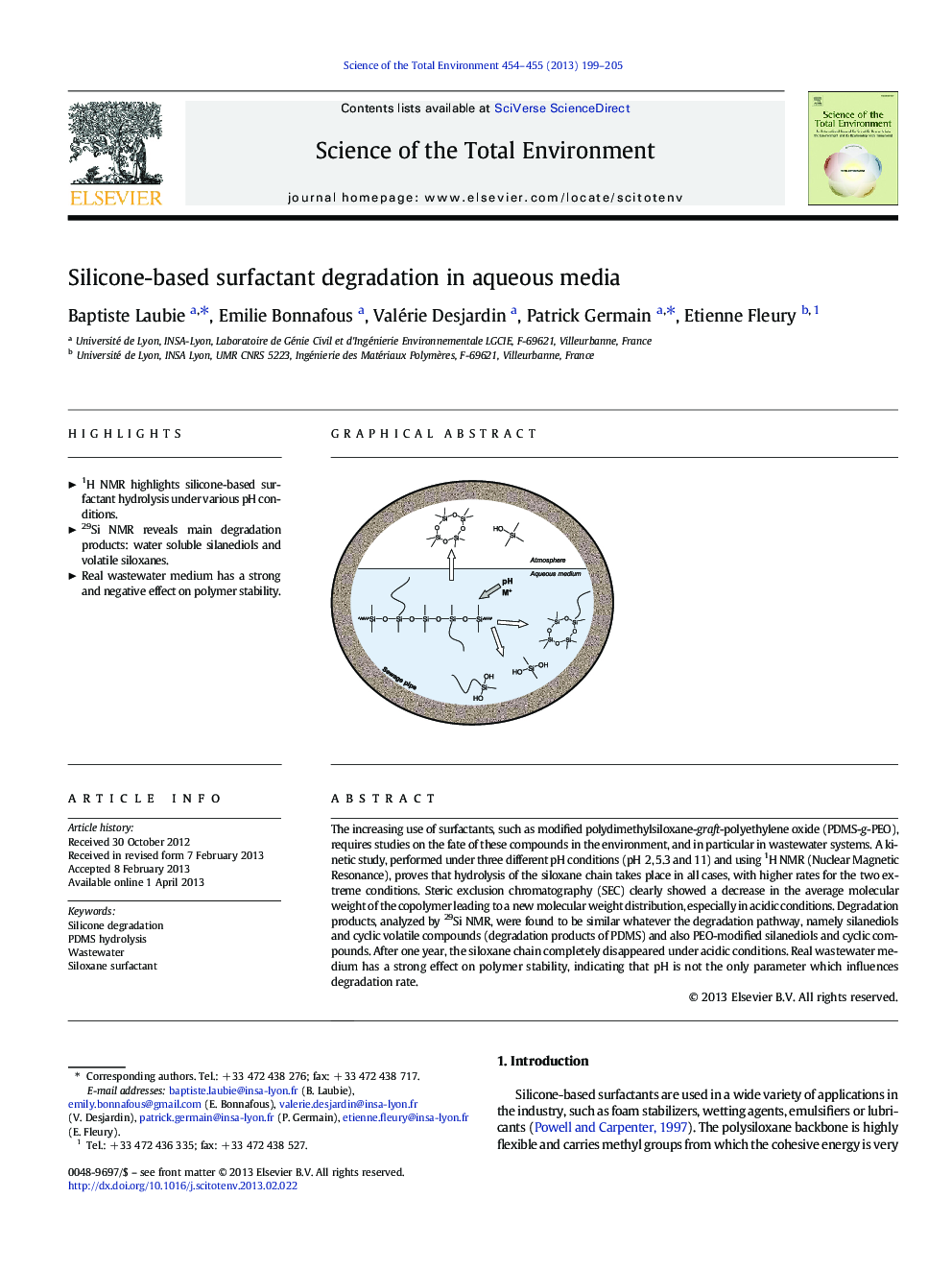| کد مقاله | کد نشریه | سال انتشار | مقاله انگلیسی | نسخه تمام متن |
|---|---|---|---|---|
| 6332970 | 1619802 | 2013 | 7 صفحه PDF | دانلود رایگان |
The increasing use of surfactants, such as modified polydimethylsiloxane-graft-polyethylene oxide (PDMS-g-PEO), requires studies on the fate of these compounds in the environment, and in particular in wastewater systems. A kinetic study, performed under three different pH conditions (pHÂ 2, 5.3 and 11) and using 1H NMR (Nuclear Magnetic Resonance), proves that hydrolysis of the siloxane chain takes place in all cases, with higher rates for the two extreme conditions. Steric exclusion chromatography (SEC) clearly showed a decrease in the average molecular weight of the copolymer leading to a new molecular weight distribution, especially in acidic conditions. Degradation products, analyzed by 29Si NMR, were found to be similar whatever the degradation pathway, namely silanediols and cyclic volatile compounds (degradation products of PDMS) and also PEO-modified silanediols and cyclic compounds. After one year, the siloxane chain completely disappeared under acidic conditions. Real wastewater medium has a strong effect on polymer stability, indicating that pH is not the only parameter which influences degradation rate.
Highlights⺠1H NMR highlights silicone-based surfactant hydrolysis under various pH conditions. ⺠29Si NMR reveals main degradation products: water soluble silanediols and volatile siloxanes. ⺠Real wastewater medium has a strong and negative effect on polymer stability.
Journal: Science of The Total Environment - Volumes 454â455, 1 June 2013, Pages 199-205
